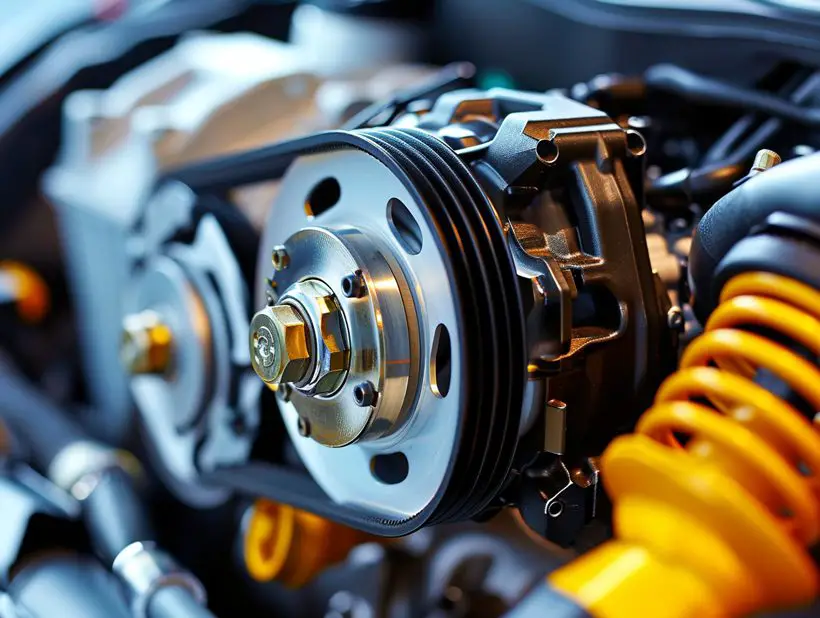Discovering rodent damage in your car can be a real headache. I’ve been there, and trust me, it’s not just about the inconvenience‚Äîit can lead to costly repairs. Rodents have a knack for squeezing into tight spaces and they love to gnaw on wires, which can wreak havoc on your vehicle’s electrical systems.
If you’re suspicious that these tiny critters have turned your car into their personal playground, it’s crucial to act fast. I’ll guide you through spotting the telltale signs of rodent damage and what to look for when it comes to chewed wires. Stay tuned, because I’m about to save you time and money with some simple inspection tips.
Signs of Rodent Damage in Your Car
When it’s about maintaining your car’s health, staying vigilant for rodent damage is crucial. Rodents can wreak havoc in the hidden corners of your vehicle. Knowing what to look for can save you from hefty repair bills down the road. Here are some tell-tale signs that rodents may have taken a liking to your car.

Visual Clues
Firstly, you want to keep an eye out for obvious visual signs. During a routine inspection of your car, you might notice:
- Nesting Materials: Bits of shredded fabric, leaves, and twigs tucked away in secluded areas.
- Droppings: Small, dark fecal pellets scattered around the engine bay or interior.
- Chewed Surfaces: Markings on rubber or plastic components, especially around wires.
Auditory and Olfactory Cues
Sometimes, your senses can alert you to rodent presence before you see any physical damage:
- Noises: Scratching sounds from within the car’s panels while it’s parked.
- Smells: A musky odor in the car could indicate a rodent’s nest is nearby.
Electronic Issues
Rodents chewing on wires can lead to malfunctions in your car’s electronic systems:
- Dashboard Alerts: Unexplained check engine lights or other warning signals.
- Operational Failures: Issues with starting the vehicle or erratic behavior of electronic components.
Performance Problems
Chewed wires can affect how your car performs. Here are a few symptoms to watch out for:
| Symptom | Possible Rodent Damage Cause |
|---|---|
| Engine Misfires | Wires or hoses connected to spark plugs chewed |
| Electrical Shorts | Exposed wires due to rodent chewing |
| Poor Acceleration or Idling | Damage to fuel injection wiring |
Staying on top of these issues is a proactive way to ensure rodents don’t get the best of your car. If you’re experiencing any of these problems, it’s best to inspect closer or consult a professional. Keeping your car free from rodent damage not only preserves its functionality but also its resale value. By incorporating regular checks into your car care routine, you’re taking an important step towards prolonging your vehicle’s lifespan.
Checking the Engine Compartment
When I suspect that rodents might have taken a liking to my car, the first place I check is the engine compartment. It’s a common hideout for critters, and unfortunately, it’s also where they can do the most damage. To properly inspect this area, I make sure to look at it both with the naked eye and through the lens of a flashlight.

Here are the steps I take to thoroughly examine the engine compartment for any signs of rodent damage:
- Remove any covers: I start off by removing the plastic covers that are often found on top of the engine. This allows me to see the underlying components more clearly.
- Check for chewed wires: I systematically check all visible wires and cables for signs of gnawing. Rodents have strong teeth that can easily strip away the protective covering, exposing the bare wires beneath.
- Inspect insulation: I scrutinize the insulation around the engine bay. If it’s been chewed up, it could mean that a rodent has been using the material to build a nest.
- Look for nests: Speaking of nests, if I notice any piled-up nesting materials – it could be anything from leaves to bits of fabric – they’re usually a tell-tale sign that rodents have set up camp.
I’m careful to also pay attention to any odd smells. A musky odor could indicate that rodents have indeed been spending time there.
Here’s a quick breakdown of what to look for and why:
| Check Item | What to Look For | Reason |
|---|---|---|
| Wires | Frayed ends, bite marks | Prevent electrical failure |
| Hoses | Holes, leakages | Avert fluid loss |
| Insulation | Missing pieces, tears | Stop further nesting |
| Belts | Cracks, fraying | Maintain proper function |
By taking these steps, I’m able to spot rodent damage early on, which enables me to address the issue before it leads to serious mechanical problems down the road. Regular checks are key, as rodents can cause havoc in a short amount of time. Checking after long periods of parking or in cold seasons when rodents seek warmth is especially important.
Inspecting the Vehicle Interior
While checking the engine compartment is critical, don’t overlook the car’s interior when assessing for rodent damage. I’ve discovered that these critters can be quite crafty, often seeking shelter inside the cabin, which offers warmth and potential food remnants.
When I move to the interior, I always start with removing the floor mats and checking underneath. Here are the main areas I focus on:
- Under the dash: This space can be irresistible to rodents, as it’s warm and secluded.
- Glove compartment: Easy to invade, it often contains materials that can be used for nesting.
- Seats and upholstery: I look for droppings, shredded fabric, or bite marks.

I then proceed to inspect the electrical components in the car’s interior. This involves testing the functionality of:
- Dashboard lights
- Radio and infotainment system
- Heating and air conditioning units
- Power windows and locks
If there’s a fault that wasn’t previously noted, it could be a sign of rodent activity. These creatures have a penchant for chewing on soft materials, and wiring insulation is no exception. I ensure to look out for frayed wires or any exposed metal that could indicate gnawing.
The smell test is another trick in my book. Rodents have a distinctive musky odor, and sniffing around the car may lead to discovering hidden infestations. Particular attention should be given to the trunk area, as it’s often less trafficked by humans and more inviting for a rodent hideout.
Finally, I don’t forget to peek into any small openings or crevices where rodents could squeeze through. Remember, a mouse can fit through spaces as small as a dime, so those minute gaps under the seats or by the pedals can be potential entry points.
Assessing the Undercarriage
When I’m inspecting my car for signs of rodent activity, I always make sure to check the undercarriage. It’s a spot often overlooked, but it provides rodents with a sheltered area to cause havoc from beneath. Here’s what I look for:
- Fresh chew marks on rubber hoses or plastic shields
- Nesting materials such as leaves, twigs, or bits of fabric
- Droppings or tracks that may indicate regular rodent traffic
I’d begin my assessment by putting on safety gloves and grabbing a flashlight. Once I’m ready, I inch my way underneath the car. If a car lift isn’t available, I make sure the vehicle is securely propped up on jack stands before crawling underneath.

The undercarriage is host to a myriad of critical components that can be at risk for rodent damage:
- Brake lines
- Fuel lines
- Electrical wiring
- Transmission systems
To systematically inspect these components, I use a methodical approach, carefully examining each section for telltale signs of rodent damage. I pay special attention to the wiring, as the consequences of chewed wires here can be severe. The table below outlines what I typically check:
| Component | Signs of Damage |
|---|---|
| Brake Lines | Visible gnawing, fluid leaks |
| Fuel Lines | Chew marks, scent of gasoline, potential leaks |
| Electrical Wires | Frayed ends, exposed copper, electrical malfunctions |
| Transmission System | Irregularities in transmission behavior, fluid leaks |
While checking the undercarriage, I also glance over the exhaust and suspension systems because these, too, can harbor less obvious signs of damage.
Throughout the process, I key in on any unusual aromas, particularly the acrid smell of urine or musky scent indicative of rodent presence. This olfactory clue often leads to hidden nests or overlooked damage.
In addition, I consider seasonal behaviors. During the colder months, rodents are even more likely to seek refuge in the nooks and crannies provided by a car’s undercarriage.
Recognizing early signs of rodent intrusions beneath the car can save me from the inconvenience and expense of unexpected breakdowns.
I find this comprehensive check of the undercarriage isn’t just a precaution‚Äîit’s essential car care that can spare drivers from unsafe conditions and costly repairs down the road.
Dealing with Chewed Wires
When I stumbled upon shredded insulation and frayed wires under my hood, I recognized the telltale signs of rodent damage. Navigating through this situation can be tricky, but here’s what I’ve learned about handling chewed wires effectively.
Firstly, safety is paramount. Before delving into any repairs, I disconnect the battery to prevent any risk of electrical shocks or shorts. It’s also a good time to snap some photos for insurance purposes, as some policies might cover this kind of damage.
Here are the steps I follow to address the issue:
- Identify the Scope: I carefully inspect the extent of the damage. Not all chewed wires will impact functionality, but even small nicks can lead to bigger problems down the road.
- Assess Functionality: I check the affected systems by starting the engine and running diagnostics. This helps determine if the damage is superficial or if the rodents have gnawed into critical wiring harnesses.
For wires that are chewed through, I consider the options:
- Professional Repair: If the damage is extensive or involves vital components, I’ll opt for a professional mechanic. They have the expertise to replace wiring harnesses and ensure my car’s safety and functionality.
- DIY Repairs: In cases of minor damage, I might use electrical tape or a wire connector for a temporary fix. However, I ensure it’s done meticulously to avoid any malfunctions.
Preventive Measures
I’ve learned it’s crucial to take preventive measures to avoid recurrence of such damage. I park away from tall grasses, ensure my garage is sealed, and regularly check for any signs of rodent activity. Some car owners also swear by deterrents like peppermint oil, rodent repellent tape, or ultrasonic devices. There’s a variety of options out there, and I’ve compiled a list of the most recommended:
| Deterrent Type | Usage Frequency | Estimated Cost |
|---|---|---|
| Repellent Sprays | Monthly | $15 – $25 |
| Ultrasonic Devices | One-time Setup | $20 – $50 |
| Peppermint Oil | Bi-Weekly | $10 – $20 |
| Rodent Repellent Tape | As Needed | $30 – $40 |
Conclusion
Staying ahead of rodent damage in your car is crucial to maintaining its functionality and safety. Remember to regularly inspect for signs of chewed wires and address any issues promptly. Whether you opt for a professional repair or tackle it yourself, safety should always be your top priority. Don’t forget the power of prevention; simple steps like parking strategically and using deterrents can save you from costly repairs down the line. Keep these tips in mind and you’ll minimize the risk of rodent damage keeping your car in top shape for the long haul.
